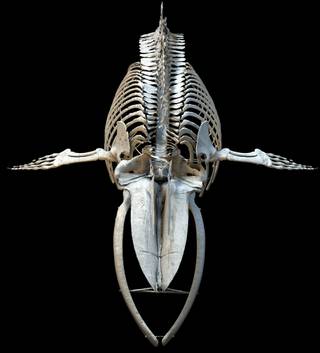Scanning a whale
This whale has been laser-scanned and 3D-modelled for scientific posterity.
Scanning the bones provides a rare opportunity to share specimen data with the world.

Select an icon to explore the whale
Select an icon to explore the whale
Select an icon to explore the whale
Scanning the bones provides a rare opportunity to share specimen data with the world.

Dr Farah Ahmed, Head of Imaging at the Museum, says, 'Creating a digital copy of the whale offers a way to capture and share data about the specimen, which could be of great value to science and education.'
As scanning technology becomes more lightweight, it is increasingly easier for the Museum to capture and share detailed digital renders of specimens.
Still, the blue whale's size and complexity presented an exciting logistical challenge for Farah and her team.
Farah says, 'With objects as large and complex as a whale, it can't come to you - you have to go to the whale.'
It took six weeks to scan the skeleton and more than six months to complete the full 3D render.
Surface scan data was used to print a small 3D model of the whale in resin.
Each bone was printed separately and assembled by Museum scientists, creating a 1.5-metre scale model.
Having an accurate scale model helped the team work out the exact positioning of the specimen in its new space, as well as how its weight will be supported.


